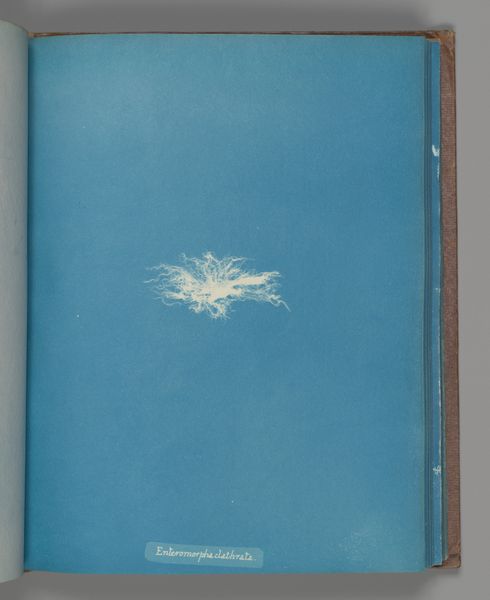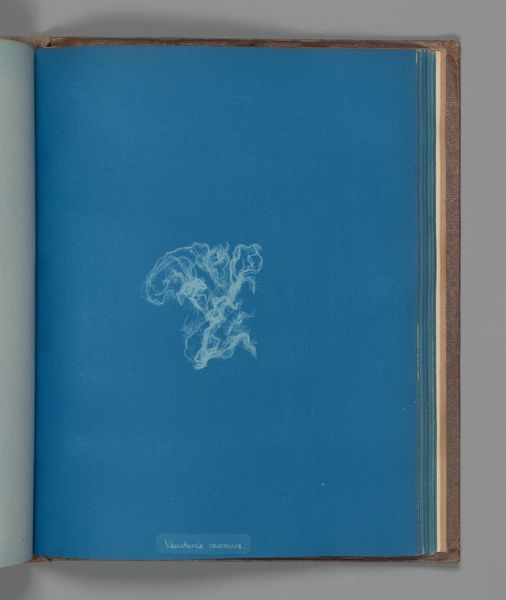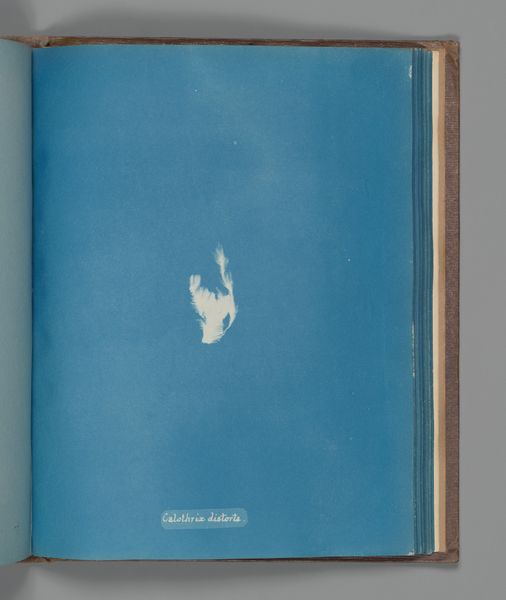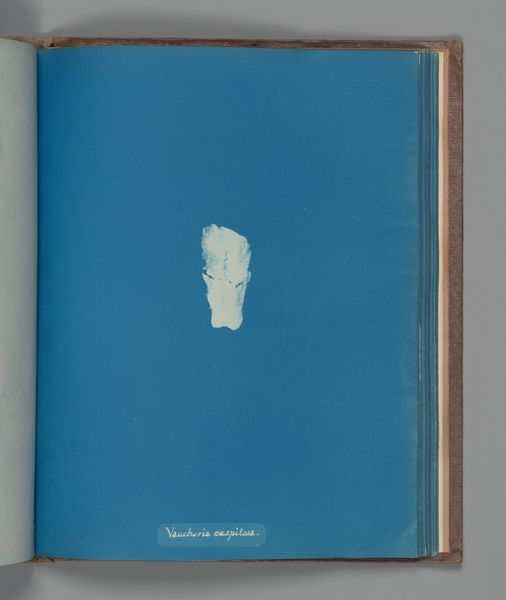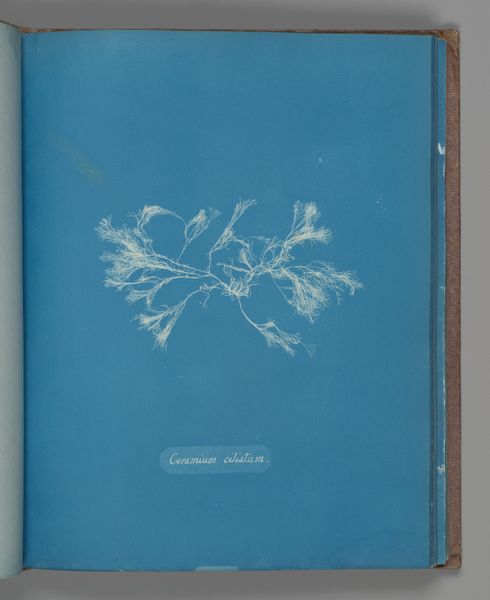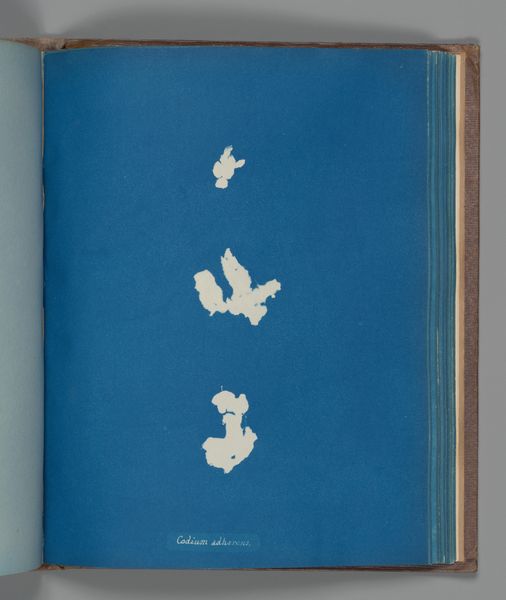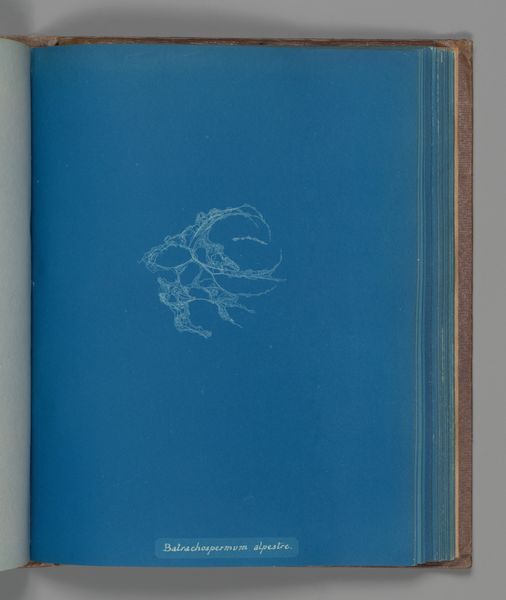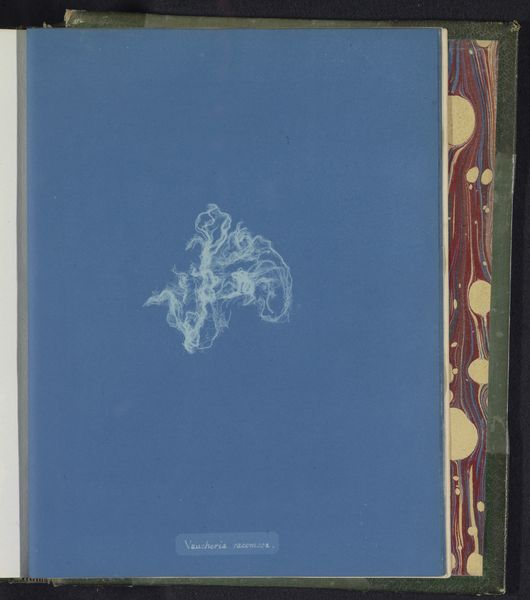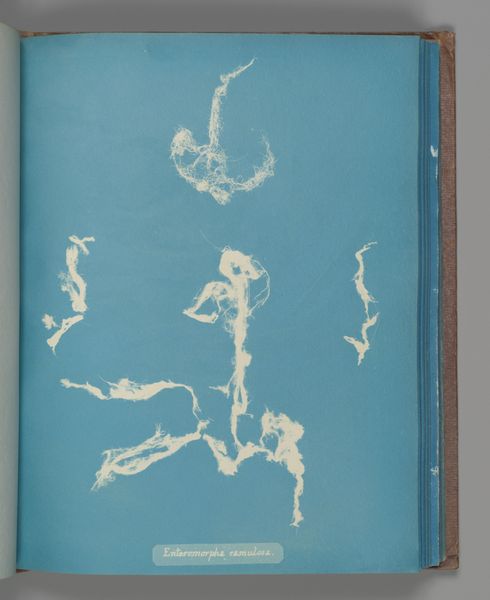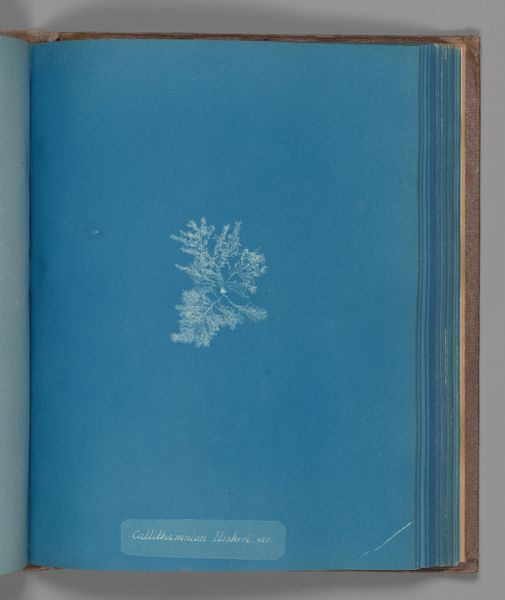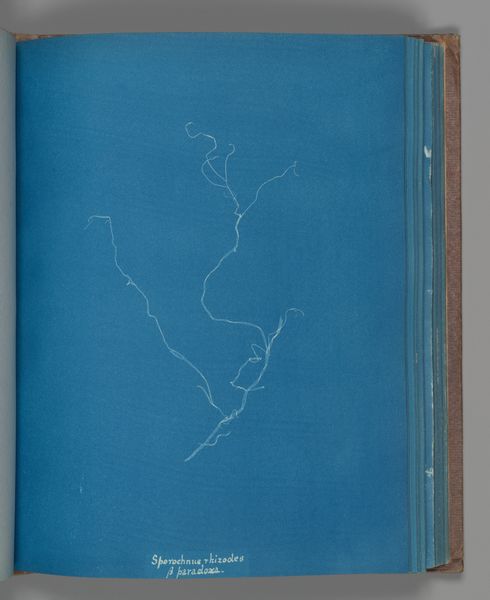
print, paper, cyanotype, photography
#
aged paper
#
homemade paper
#
paper non-digital material
#
paperlike
# print
#
book design
#
personal journal design
#
paper texture
#
paper
#
cyanotype
#
photography
#
book mockup
#
publication mockup
#
publication design
Dimensions: Image: 25.3 x 20 cm (9 15/16 x 7 7/8 in.)
Copyright: Public Domain
Curator: Editor: Here we have Anna Atkin’s *Jania rubens*, created between 1851 and 1855. It's a cyanotype, so a very early form of photography, made using paper and light-sensitive chemicals. It is currently located at the Metropolitan Museum of Art. The stark contrast between the cyan blue background and the delicate white seaweed creates a wonderfully simple image. How should we interpret this? Curator: Considering Atkins' cyanotypes, let’s look at them in a Materialist context. Forget, for a moment, about inherent beauty, and look instead at the materials, the production. Why cyanotype? What did this relatively inexpensive method offer Atkins that other, perhaps more refined, photographic processes couldn't? And who was she producing this *for*? Editor: It feels almost like scientific documentation…like a study? Maybe the accessibility of cyanotypes allowed her to document specimens in a way that was both artistic and, dare I say, efficient? Was it a common process? Curator: Exactly. Remember, this was the mid-19th century. Photography was still quite new. The cyanotype process was relatively simple and didn't require a darkroom or complex equipment, things that would require money and power that many woman in science, like Atkins, would not have readily had available. It was a cost-effective way to produce multiple copies, perfect for sharing information within the scientific community. Furthermore, look at the context. Editor: Okay, so its distribution makes it something more than a simple study then? Curator: Precisely! Now consider, the presentation of Atkins’ photographs in book form – *Photographs of British Algae: Cyanotype Impressions*. Was this artistic intention or accessible, scientific data? This also gives us insight into the labor, skill, and economic factors involved in creating and distributing knowledge at that time. The question of high art versus functional craft becomes extremely interesting. Editor: So, the "beauty" isn't just aesthetic; it's embedded in the process itself. I now see a reflection of available resources in Atkin's decision making. Thanks! Curator: Precisely! That makes it so rewarding to discuss this piece. We were able to dig into the making, and that sheds so much light on its meanings.
Comments
No comments
Be the first to comment and join the conversation on the ultimate creative platform.

